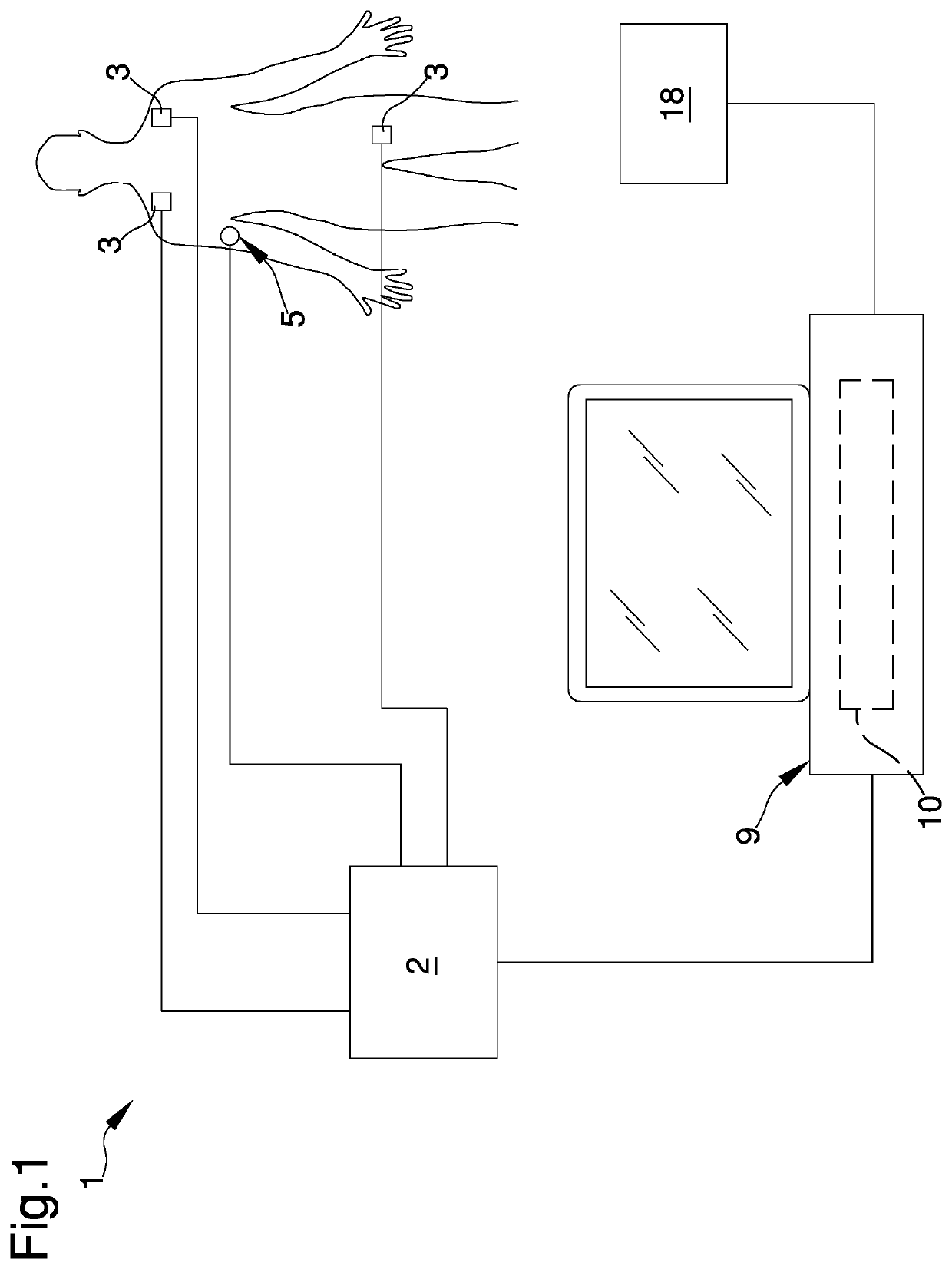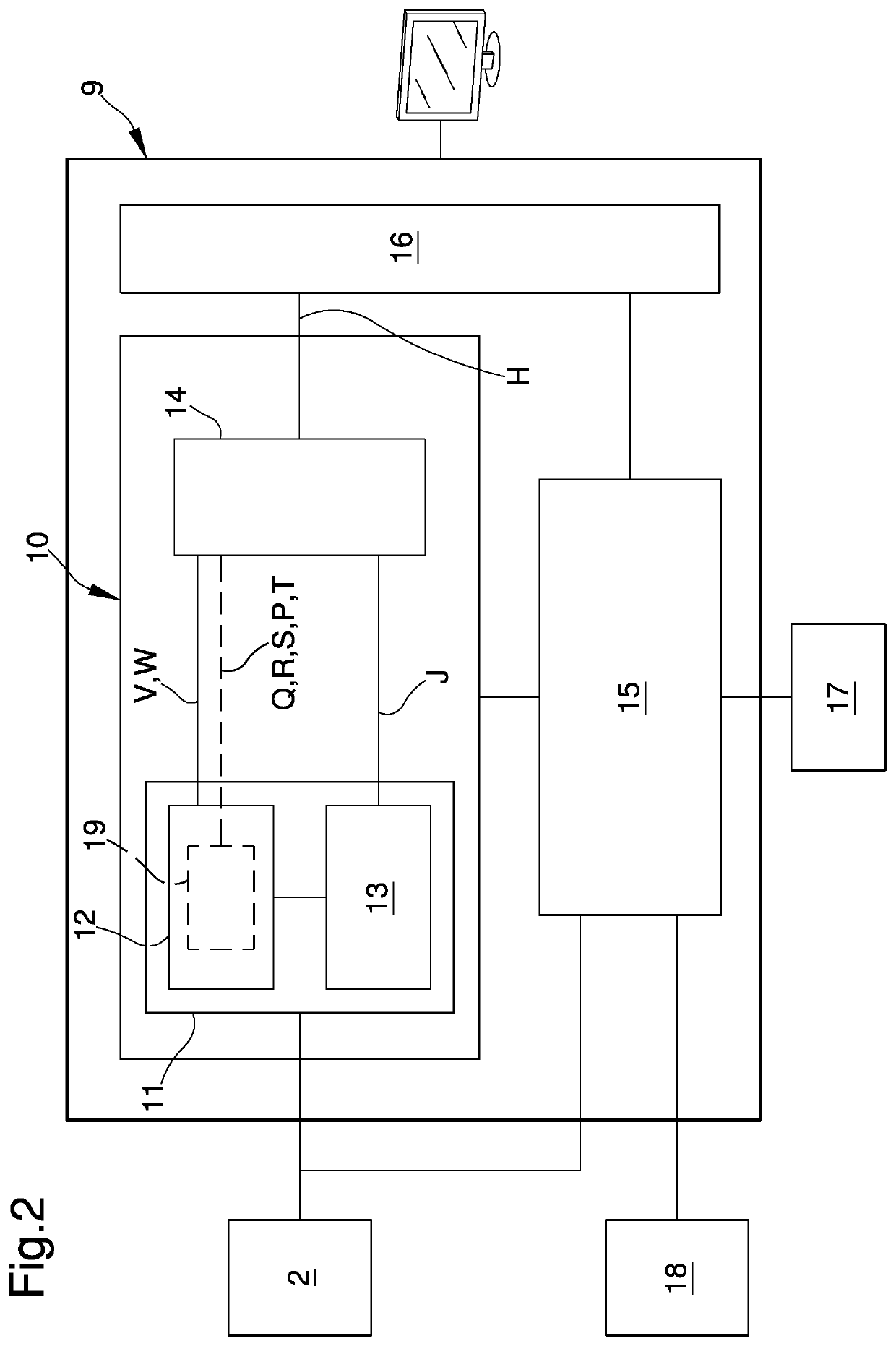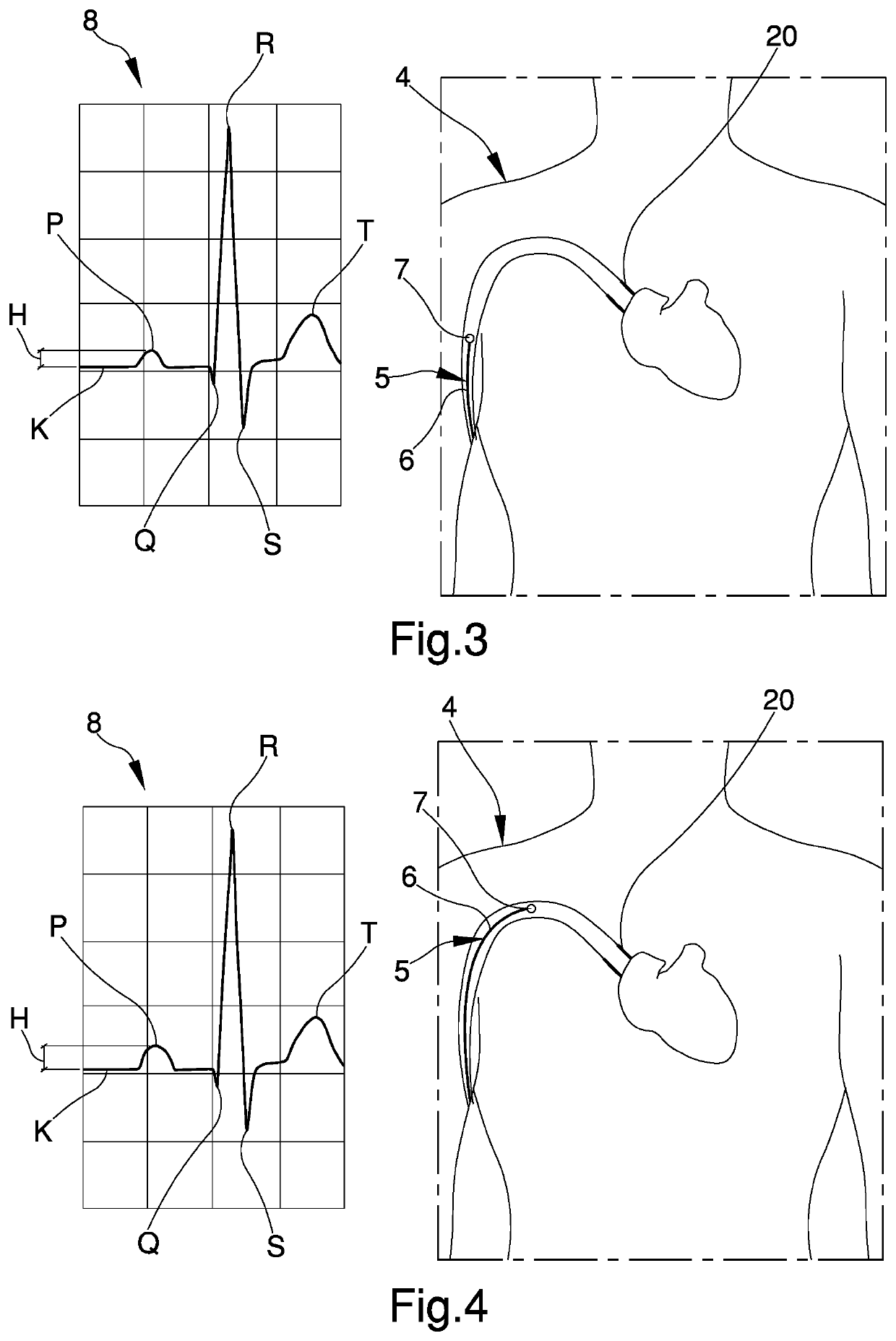Medical apparatus for the introduction of catheters into the human body
a technology for medical equipment and catheters, applied in the field of medical equipment for the introduction of catheters into the human body, can solve the problems of difficult control of position and unsatisfactory final position, and achieve the effect of improving the placement of catheters
- Summary
- Abstract
- Description
- Claims
- Application Information
AI Technical Summary
Benefits of technology
Problems solved by technology
Method used
Image
Examples
first embodiment
[0082]In a first embodiment, the first processing means 11 comprise an additional unit 19 for processing the first recognition data Q, R, S, P, T, V, W to obtain first input data Q, R, S and second input data P.
[0083]In particular, the first additional unit 19 processes the recognition data Q, R, S, P, T, U, V to identify the group Q, R, S (first input data) and to recognize the point P on the intracavitary ECG strip 8.
[0084]The second processing means 14, in this first embodiment, are associated with the additional unit 19 and with the second processing unit 13 for the acquisition and the processing of the second input data P and of the second recognition data J to obtain the aforementioned usage information H.
[0085]In this first embodiment, the processed usage information is the heights of the point P assessed with respect to the isoelectric line K and indicated by the letter H.
[0086]The usage information H, therefore, is at least in part of the type of heights of the point P asse...
second embodiment
[0089]In a second embodiment, the additional unit 19 is absent and the second processing means 14 are associated with the first processing unit 12 to receive the first recognition data Q, R, S, P, T, V, W, V, W, and with the second processing unit 13 to receive the second recognition data J.
[0090]The second configuration is particularly useful in case of ECG strips of patients with fibrillation under way, which means the “standard” pattern of the strip itself is lost.
[0091]In this case, the first recognition data processed are the points V and W, and the second recognition data J make reference to a condition in which it is hard to plot the isoelectric K.
[0092]In this second embodiment, the processed usage information H will be of the type of maximum heights evaluated between the absolute maximum point V and the minimum absolute point W of an intracavitary ECG strip 8 for a given cardiac cycle.
[0093]In this case too, the heights H will have a maximum value when the auxiliary electro...
PUM
 Login to View More
Login to View More Abstract
Description
Claims
Application Information
 Login to View More
Login to View More - R&D
- Intellectual Property
- Life Sciences
- Materials
- Tech Scout
- Unparalleled Data Quality
- Higher Quality Content
- 60% Fewer Hallucinations
Browse by: Latest US Patents, China's latest patents, Technical Efficacy Thesaurus, Application Domain, Technology Topic, Popular Technical Reports.
© 2025 PatSnap. All rights reserved.Legal|Privacy policy|Modern Slavery Act Transparency Statement|Sitemap|About US| Contact US: help@patsnap.com



